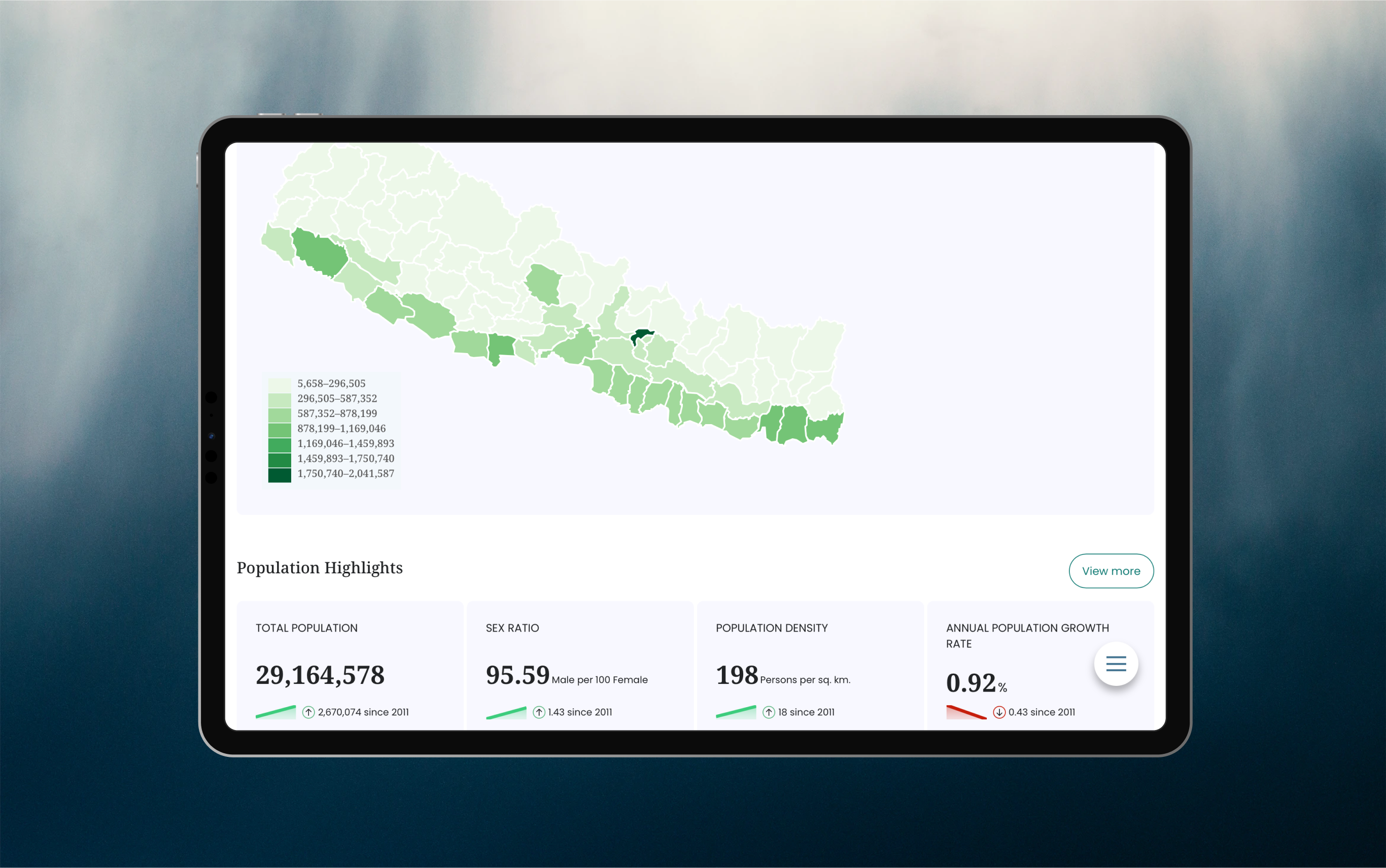Visualising Nepal’s National population and housing census 2021 data
CLIENT
United Nations Population FundWHAT WE DID
UI/UX Design, Websites & portals, Data EngineeringINDUSTRY
Civic/Government
Nepal’s 2021 National Population and Housing Census was one of the most ambitious nationwide data collection exercises undertaken in recent years. To execute it successfully, the Central Bureau of Statistics (CBS) faced two key challenges: (1) managing the recruitment and deployment of nearly 48,000 enumerators and supervisors across the country, and (2) ensuring that the census data collected could be accessed, understood, and used by a broad range of stakeholders—from researchers and policymakers to the general public.
Traditional manual systems lacked the scale, responsiveness, and efficiency required for such a complex and time-sensitive operation. CBS needed a robust digital infrastructure to manage human resources in real time and monitor the daily progress of field activities. Moreover, the census data, once collected, needed to be presented in a user-friendly, interactive way that would allow for easy exploration, visualization, and download—tasks that are particularly challenging given the size and complexity of the dataset.
Our agency provided a comprehensive end-to-end digital solution that addressed both logistical and analytical challenges of the census.
We began by designing and prototyping a web and mobile-based Human Resource Management and Monitoring System (HRMMS) to manage the recruitment and oversight of nearly 48,000 field personnel. The system included features for online applications, automated shortlisting, and recruitment workflows. A real-time monitoring module, accessible via Android and iOS apps, allowed CBS and district offices to track daily household listings and census progress as they unfolded.
To support the system rollout, we developed user manuals, illustrated guides, and conducted extensive training for district statistics officers. A dedicated helpdesk was also established to assist applicants throughout the process.
In the second phase, we designed and implemented a dynamic Census Data Visualization Portal. This web-based platform allows users to explore census findings through clear and interactive charts, graphs, and downloadable tables. Special attention was given to accessibility and usability, ensuring that complex demographic data could be easily navigated and interpreted by both experts and the general public.
The result is a powerful, integrated digital ecosystem that supported the operational success of the census and made population data more transparent and usable than ever before.





